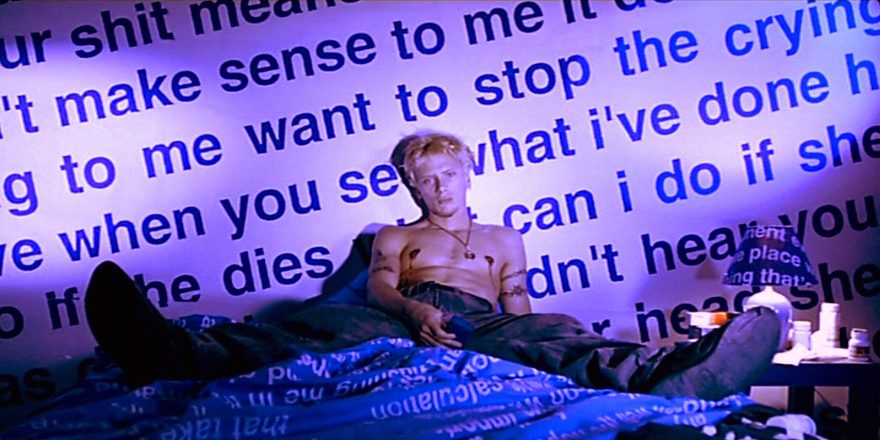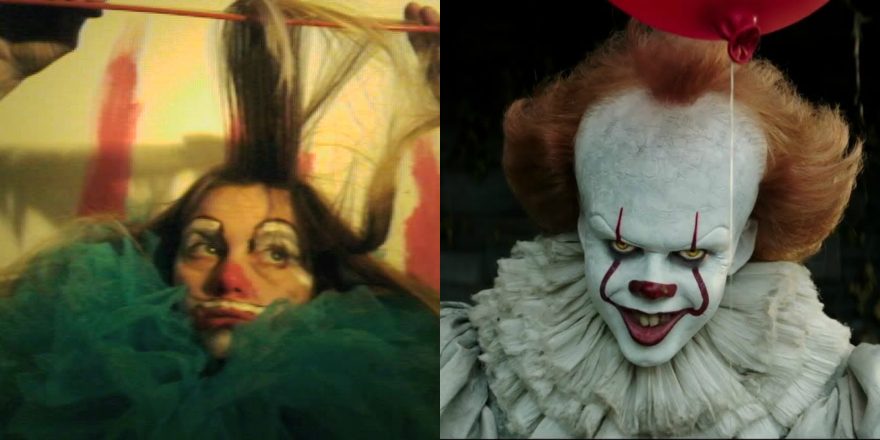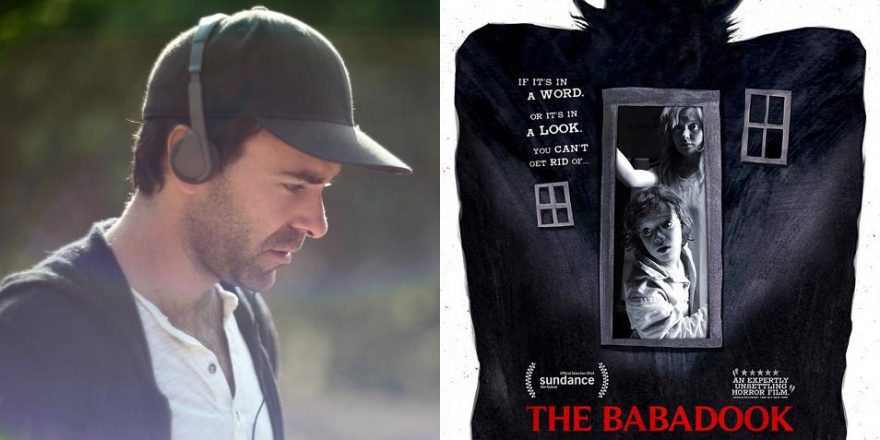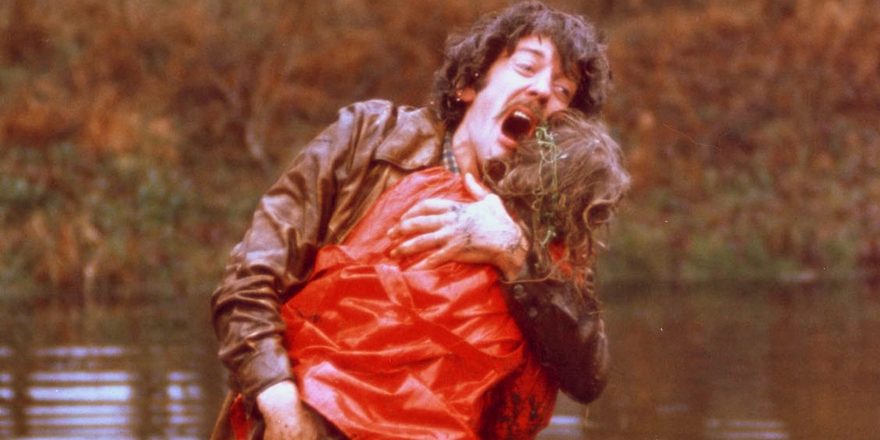Reclaiming horror movie monsters as queer icons went mainstream in 2017. When rumors spread on Twitter and Tumblr that Netflix’s algorithm had accidentally categorized Jennifer Kent’s horror film The Babadook as LGBT, everyone was babashook. The titular shadowy, top hat-wearing representation of maternal grief and guilt was suddenly hailed a queer hero, spawning memes, fan videos and songs, while numerous babalewks were served at Pride parades. The release later that year of It, with Pennywise’s updated retro ruffles and statement-sleeved costume, had the internet linking the monsters from both films as lovers. Polls were taken for the official nickname of the new “it couple” with faces beat for the gods (#Babawise vs. #Pennydook), and fans shipping the pair took to social media to share art and tributes, such as: “Find someone that will look at you the way Pennywise looks at the Babadook.” Is it all just frivolous fun or is there more to this babadiscourse?
My contribution to the world, thank you @starkrhodey for the inspiration. ? #LoveWins #PennyDook #BabaWise pic.twitter.com/tzOqhbr93g
— ( ◔ ʖ̯ ◔ ) The Tiffany Problem (@tiffysniffs) September 12, 2017
Due to censorship in the 1930s, overt expressions of queerness (or “sex perversion”) in Hollywood cinema were forbidden, and homosexuality had to be hinted at and coded with verbal and visual clues. Though censorship became more lax in the ’50s and ’60s, this did not solve the problem of representation. Queer characters were commonly reduced to negative stereotypes: psychologically disturbed, self-destructive, devious. Confronting erasure or demonization on screen, queer viewers responded by reading between the lines for points of identification. Classic movies and Disney villains alike have been adopted as our own, from The Wizard of Oz (featuring misunderstood Dorothy’s journey over the rainbow/toward self-discovery with her trio of misfit companions, including a self-proclaimed “sissy”) to Ursula, the octopoid sea witch from The Little Mermaid inspired by drag icon Divine. In the 2017 Indiewire article The Best Queer Films You Didn’t Know Were Queer, From Fight Club to Who Framed Roger Rabbit?, Jude Dry put the Babadook incident in broader context, stating that “While straight cinephiles scratched their heads at the recent claim that Jennifer Kent’s The Babadook is a queer icon, LGBT audiences were unsurprised: We have always known how to make our own fun.”
Queerness and monstrosity have also long been intertwined, especially in horror cinema. Throughout film history, queer people have been characterized as aberrant, abject or monstrous “others,” presenting a threat to white, heterosexual normality. Transgressive figures such as the vampire have been used to monsterize queer sexuality and desire since Universal’s horror films of the ’30s. Horror film villains and monsters are usually evil, so is reclaiming them as queer icons problematic? Admittedly, the practice is fun, but it is also pretty punk, like taking back the term “queer” and subverting its derogatory connotation. And sure, monsters and villains are bad, often violent and dangerous, but they are also the most radical characters, breaking taboos and the status quo, defying traditions and expectations about what is considered normal or natural. They also do all this with panache, wearing the coolest costumes and makeup, and – when it comes to Disney films – singing the best songs.
Feeling like an outcast or misfit is part of growing up queer for many people. Writing about the 2017 Babadook phenomenon for INTO, Kevin O’Keeffe pointed to a simple yet poignant tweet by Vox journalist Carlos Maza: “Gay people identify with monsters because we grew [up] fearing we might be one.” While, of course, we’re not monsters, O’Keeffe wrote that it’s nevertheless “fun to imagine scaring the bullies who made us feel like monsters anyway.” Taking it one step further, I find it hard not to cheer when the killer in a slasher film exterminates the insult-spewing hetero jock. And shouldn’t white, heterosexual normality be threatened and destabilized instead of being the default standard against which all other perspectives and experiences are measured?
As a queer horror fan and filmmaker, I often identify and sympathize with the monster or villain – or at least root for them. From misunderstood loners just looking for love (Frankenstein’s monster in Frankenstein and Otto in Bruce La Bruce’s Otto; or, Up with Dead People), to ostracized victims of bullying with killer cheekbones seeking revenge (Maleficent in Sleeping Beauty and Carrie White in Carrie), to characters uncomfortable in their own skin and struggling with identity (Ginger in Ginger Snaps), to characters more comfortable in other people’s skin but also struggling with identity (Leatherface in The Texas Chainsaw Massacre).
![]()
If the Babadook and Pennywise can be added to the ranks of queer heroes, I want to crown an overlooked horror film villain as queer icon: Mary Lou Maloney from Bruce Pittman’s 1987 Hello Mary Lou: Prom Night II. Fiercely feminist, anti-Catholic and unapologetically sex positive, Mary Lou is my dream teen scream queen.
The Canadian-made Hello Mary Lou: Prom Night II has nothing to do with the 1980 disco slasher Prom Night, and plays like a mixtape of horror cinema’s greatest hits. The plot is Carrie meets A Nightmare on Elm Street Part 2: Freddy’s Revenge with references to everything from The Shining to The Exorcist. Character names are even nods to cherished horror filmmakers: Craven, Dante, Carpenter, Henenlotter, Browning, O’Bannon and Romero are all honored. Not merely derivative or clichéd, Hello Mary Lou: Prom Night II features hallmarks of queer art and cinema such as pastiche and camp (murder by possessed cape!), that appeal to a queer sensibility – or at least mine.
We first meet Mary Lou Maloney (Lisa Schrage) as she recites her sins to a priest: “I have disobeyed my parents, many times. I have taken the Lord’s name in vain, many times. I’ve had sinful relations – boys at my school. Many boys, many times … Father, there’s one more thing. I loved every minute of it.” A quick cut reveals she has scrawled a message on the inside of the confessional with a tube of lipstick: “For a Good Time Call Mary Lou, 588 6558,” recalling a pre-Grindr era of bathroom stall graffiti messaging. When I first saw the film on VHS as a shy, angst-ridden young teen attending Catholic school and struggling with his sexuality, a rush of excitement surged through me. Here was a strong, shameless, rebellious and proudly promiscuous female character – and I was instantly on her side.
![]()
When a prank by her jilted boyfriend Billy goes wrong, Mary Lou burns to death on stage while being crowned Hamilton High’s prom queen of 1957. 30 years later, her vengeful spirit is released, and she starts picking off teachers and kids at her old high school. When she’s alive, Mary Lou is sassy and sexy, ruthlessly ambitious (dating Billy for his daddy’s money), puts herself and her own pleasure(s) first and gives zero fucks. Upon her return – in the words of the Los Angeles Times review – “Mary Lou’s spirit rises up like the Creature from the Black Lagoon to protest … a severe fate for having played around.” Girl power!
It’s easy to make feminist and/or queer readings of the murders Mary Lou metes out while inhabiting the body of a hapless Hamilton High student, Vicki (Wendy Lyon). A perverted science teacher gets his crotch burned for groping Vicki. As revenge for turning off her radio playing Ronnie Hawkins’ “Mary Lou” (as well as other minor indignities), one of Vicki’s friends is telekinetically crushed in a locker following a bizarre nude stalking scene and girl-on-girl shower kiss. Arguably, the objective of this scene is to titillate straight, teenage male viewers, however, paired with the homoeroticism of the possession (one sequence includes the caressing of Vicki’s body under her bedsheets), I wonder if Mary Lou is sexually fluid … or just really progressive for 1957. Later, when she aggressively straddles her boyfriend and taunts him with, “You turning into a fag?” for failing to get it up, she does not come across as a homophobe slinging the slur, but rather, as “one of us” (to use the classic line from Tod Browning’s Freaks).
![]()
In my favorite scene, Vicki, possessed by Mary Lou, goes to confession. Just as in the opening confessional scene, she is not seeking absolution. While reciting her sins, Vicki/Mary Lou asks, “Will you help me, Father? Will you pray for me? Will you fuck me?” (echoing Regan’s infamous demand in The Exorcist). She repeats a previous statement made by Mary Lou in 1957 that, “It’s a big, free country,” implying people should do what they like. Before murdering the priest, she reports that, “There’s no God … And there’s no Heaven. And do you know what pissed me off the most? No fucking wings!” Catholic rules and guilt do not apply to Mary Lou, and I found this refreshing when I first saw the film. Her brazen sex positivity and lack of repentance were liberating for a queer kid being taught at school to suppress a sexual orientation considered monstrous.
The Babadook brouhaha may have subsided, but fortunately monsters are still in. The Shape of Water, a film about a mute woman’s sexual relationship with a Gill-man, won the most awards at the 2017 Oscars, including Best Picture. When its creator, Guillermo del Toro, waxed poetic during his acceptance speech for Best Director at the 2017 Golden Globes, he proudly proclaimed, “Since childhood, I have been faithful to monsters. I have been saved and absolved by them. Because monsters, I believe, are patron saints of our blissful imperfection. And they allow and embody the possibility of failing …”
Bringing it back to the Babadook, the creator of the “Babussy” Ditty video tribute told Broadly, “As many members of the LGBT community can attest for, suppression is something that we get used to on a daily basis. … It’s nice to see the Babadook fight back against those who attempted to forget him and his existence – that, and it’s always nice to have a laugh.”
In The Babadook, the popup book warns, “If it’s in a word, or it’s in a look, you can’t get rid of the Babadook” – and it seems that reclaiming horror film monsters as queer icons is here to stay. Babayaaaas.







